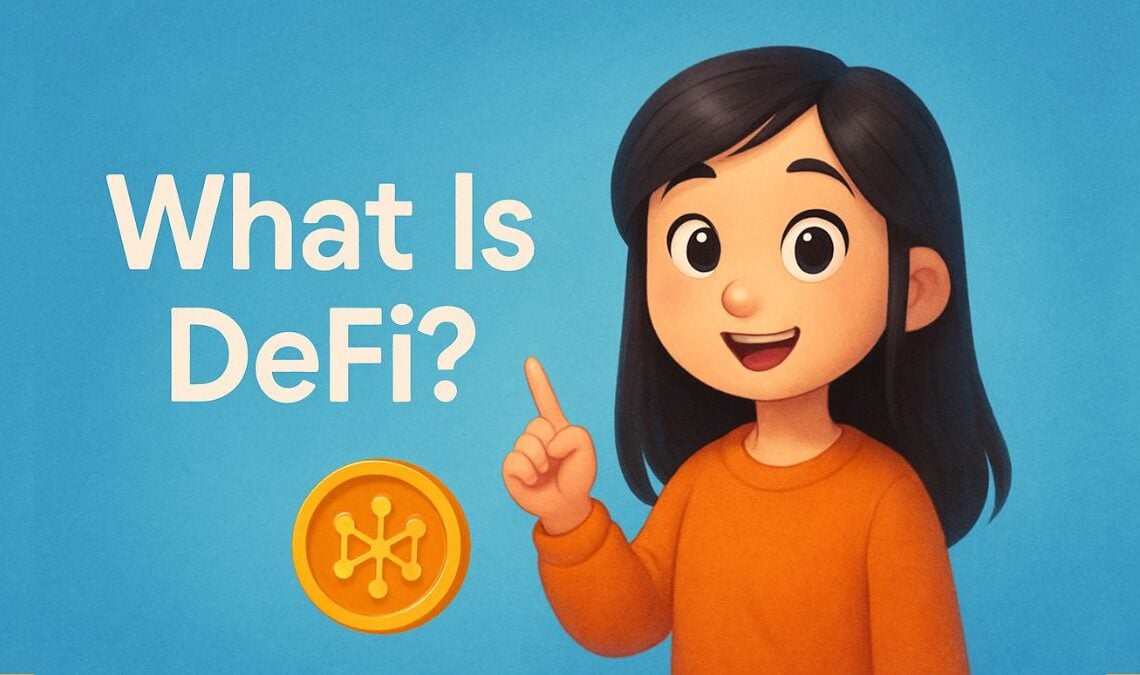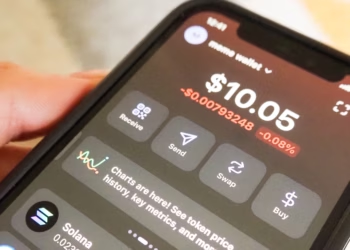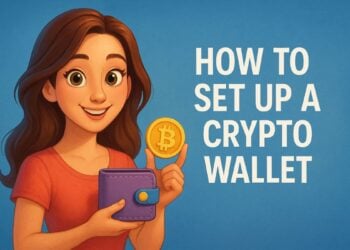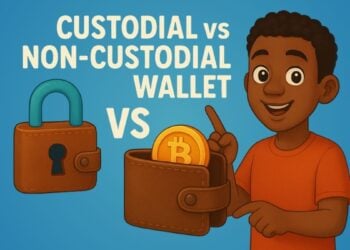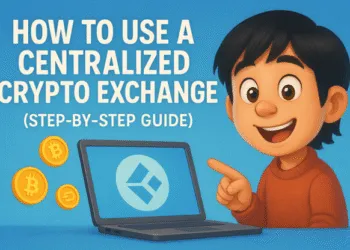In 2025, understanding what is DeFi—short for decentralized finance—is essential for anyone stepping into the crypto space. Unlike traditional banking systems, DeFi removes intermediaries and gives users direct control over their money, thanks to blockchain-powered applications. But what exactly does that mean in practice, and how can you start using it?
This guide breaks down the concept in simple terms, showing how DeFi works, what it offers, and how you can begin exploring it safely.
Table of Contents
ToggleRelated posts
What Is DeFi? The Core Idea Behind Decentralized Finance
At its core, DeFi refers to financial tools and services built on public blockchains like Ethereum, allowing people to lend, borrow, trade, and earn interest—without going through banks or centralized companies.
Instead of relying on institutions, DeFi platforms use smart contracts, which are self-executing programs that run automatically when certain conditions are met. These contracts live on the blockchain and can be verified, audited, and used by anyone with a crypto wallet.
Popular DeFi platforms include protocols like Uniswap (for decentralized trading), Aave (for lending and borrowing), and Lido(for liquid staking). All operate without a middleman.
How Does DeFi Work?
DeFi works through a stack of technologies built on top of public blockchains. Here’s a simplified breakdown:
- Smart Contracts: These are the backbone of DeFi. They automate transactions—like giving you a loan or executing a token swap—without needing human approval.
- Decentralized Applications (dApps): Interfaces like MetaMask or mobile apps allow users to interact with DeFi protocols.
- Stablecoins: Tokens like USDC or DAI are used to represent fiat value, enabling people to earn or borrow crypto in “dollar terms” without volatility risk.
- Liquidity Pools: Instead of order books, many DeFi apps use pools of user-contributed assets to facilitate trades or provide loans.
Each piece plays a role in removing centralized control while preserving access to traditional financial services.
Why DeFi Matters in 2025
The question isn’t just what is DeFi, but why is it so important today? Here’s what makes it powerful:
- Financial Inclusion: Anyone with internet and a crypto wallet can participate, regardless of geography or credit score.
- Transparency: All transactions are recorded on-chain and open to audit.
- Yield Opportunities: From staking to liquidity farming, DeFi users can earn passive income from idle assets.
- Innovation Speed: Developers can build and deploy protocols quickly, resulting in constant evolution and new use cases.
In a time where traditional banks still operate with opaque rules and slow processes, DeFi offers a real-time, programmable alternative.
Risks and How to Use DeFi Safely
While DeFi offers huge potential, it’s not risk-free. Here’s what to keep in mind:
- Smart Contract Vulnerabilities: Bugs or exploits in the code can lead to massive losses.
- Rug Pulls & Scams: Some DeFi projects are not trustworthy. Always do your own research.
- Impermanent Loss: Providing liquidity can result in losses if token prices move significantly.
- No Customer Support: If you lose funds due to a mistake, there’s no helpline to call.
To use DeFi safely:
- Stick to audited and well-known platforms.
- Never share your private keys or seed phrase.
- Start with small amounts to learn how transactions work.
How to Get Started with DeFi
Getting started doesn’t require technical expertise. Here’s a simple path:
- Create a Crypto Wallet: MetaMask or Trust Wallet are popular and easy to use.
- Buy Crypto: Get ETH, SOL, or other tokens from a regulated exchange like Coinbase or Binance.
- Connect to a dApp: Visit a DeFi platform and connect your wallet.
- Explore: Try swapping tokens on a DEX, lend on Aave, or stake ETH via Lido.
Always start with small amounts until you’re confident navigating the interface.
Final Thoughts: Why Learning What Is DeFi Matters Now
As crypto matures, decentralized finance is becoming one of its most valuable applications. Understanding what is DeFi isn’t just useful for investors—it’s crucial for anyone who wants to engage with the future of money.
DeFi is reshaping how we save, invest, and transact. While risks remain, the opportunities are growing fast. Whether you’re a curious newcomer or an experienced trader, exploring DeFi in 2025 might be one of the most empowering moves you can make.

